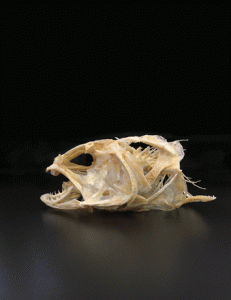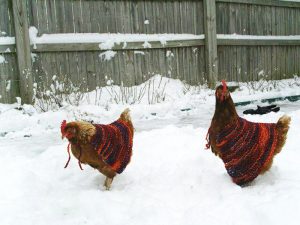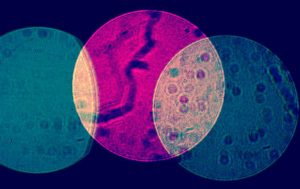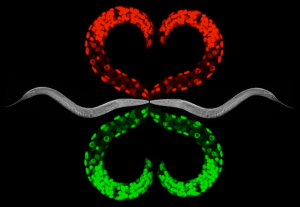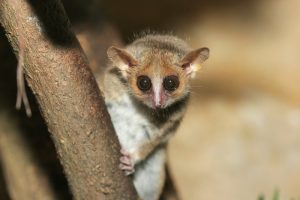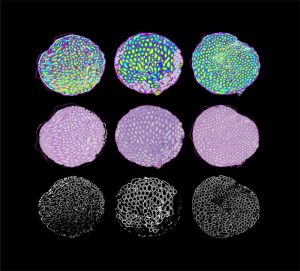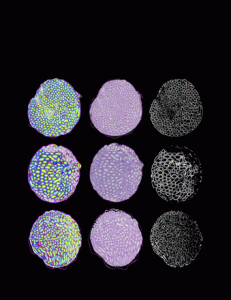Enter your address to receive notifications about new posts to your email.
Science & Publishing
-
Science & Publishing
New in G3: halophilic yeast, cotton gene flow, and karyotypic evolution in icefish
Check out the July issue of G3! Table of Contents Genome Report Insight into the Recent Genome Duplication of the Halophilic Yeast Hortaea werneckii: Combining an Improved Genome with Gene Expression and Chromatin Structure Sunita Sinha, Stephane Flibotte, Mauricio Neira, Sean Formby, Ana Plemenitaš, Nina Gunde Cimerman, Metka Lenassi, Cene Gostincar, Jason E. Stajich, Corey Nislow G3: Genes,…
-
Science & Publishing
Hot wings and snow birds: Extreme temperature adaptation in domestic chickens
Humans built the modern world with the help of domestic plants and animals. A byproduct of our many domestication experiments is a series of excellent long-term controlled evolutionary comparisons that are helping geneticists understand adaptation. In a study published in the May issue of G3, Fleming et al. identify genomic regions under natural selection in…
-
Science & Publishing
Alcohol withdrawal is influenced by Slo channels
For people with alcohol dependence, withdrawal symptoms can cause relapse. Some physical symptoms—such as seizures, delirium tremens, and heart rhythm abnormalities—can be fatal, but even non-life-threatening symptoms like anxiety and confusion can trigger relapse. The changes in the nervous system that underlie withdrawal symptoms may involve ion channels in the Slo family. The function of…
-
Science & Publishing
How nematodes sense danger
In critical situations, communication can mean the difference between life and death. If our house goes up in flames, we don’t need to smell smoke to be alarmed as long as someone yells, “Fire!” This isn’t unique to humans; even creatures with much less sophisticated means of sharing information have ways of telling each other…
-
Science & Publishing
An overactive immune system alters the gut microbiome in Drosophila
Taking probiotics might be the latest health fad, but for people with inflammatory bowel diseases, the microbiome is a more serious matter. With these autoimmune diseases, the composition of the gut microbiome can have critical health consequences. In the June issue of GENETICS, Mistry et al. use fruit flies to determine whether immune system activity…
-
Science & Publishing
#Worm17 love
Every two years, the GSA is proud to support the C. elegans research community as they come together to share their science and their infectious enthusiasm. Last week, the 21st International C. elegans Conference enjoyed beautiful Los Angeles weather and an abundance of cutting-edge biology. For those missing their worm friends already, and for those who couldn’t make it…
-
Science & Publishing
The mouse lemur: a new genetic model organism
Palm fronds crunch under a researcher’s foot as she hikes through a rainforest in Madagascar looking for a spot to release a tiny, omnivorous ball of fur with bulging eyes—a mouse lemur. This creature, the smallest type of primate, is an important research subject: it has just yielded a blood sample, skin cells, and an…
-
Science & Publishing
Housekeeping genes escape miRNA repression through alternative polyadenylation
Changing where the polyA tail is added to an mRNA transcript can fine-tune the tissue-specific expression of many genes, reports a Caenorhabditis elegans study published in the June issue of GENETICS. Blazie et al. show alternative polyadenylation (APA) allows transcripts to evade microRNA (miRNA) silencing in some tissues, allowing for tissue-specific expression of those genes.…
-
Science & Publishing
Fido won’t fetch? Maybe it’s his pedigree
Whether a thunderclap drives your dog to cower behind the couch or leaves it unfazed may be determined in part by genetics. In the June issue of GENETICS, Ilska et al. analyze genetic contributors to canine personality traits—such as fear of loud noises—using owners’ reports of their pets’ behavior. The researchers chose this survey-based method…
-
Science & Publishing
Behind the cover: Male infertility in the mouse Collaborative Cross
Fascinating discoveries sometimes emerge from the most daunting of experimental roadblocks. Designed to generate over 1,000 recombinant inbred mice lines for genetic mapping, the Collaborative Cross (CC) project unearthed astounding variation in male fertility when nearly 95% of the highly inbred CC lines went extinct. As part of the Multiparental Populations series in the June…
-
Science & Publishing
New in G3: multiparental populations, worm fat levels, and mutant screen reports
Check out the June issue of G3! Table of Contents Editorial Back to the Future: Multiparent Populations Provide the Key to Unlocking the Genetic Basis of Complex Traits Dirk-Jan de Koning, Lauren M. McIntyre G3: Genes, Genomes, Genetics June 2017 7: 1617-1618; DOI: https://doi.org/10.1534/g3.117.042846 Commentary Epistasis: Searching for Interacting Genetic Variants Using Crosses Ian M.…

